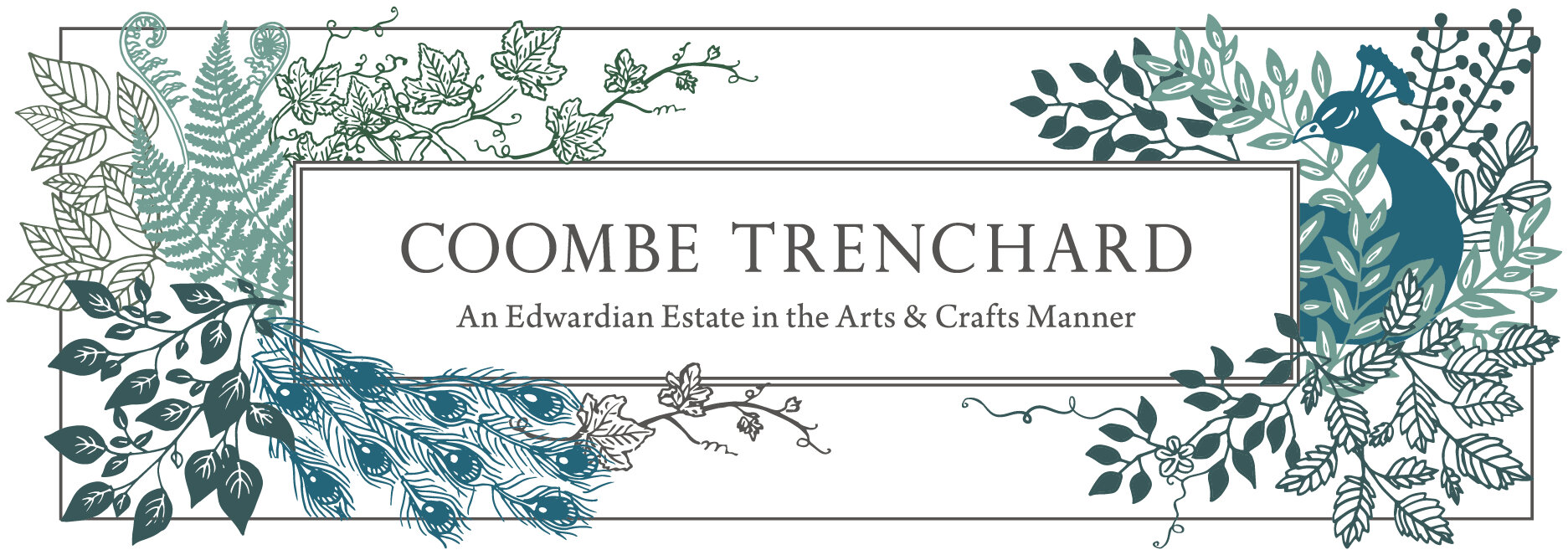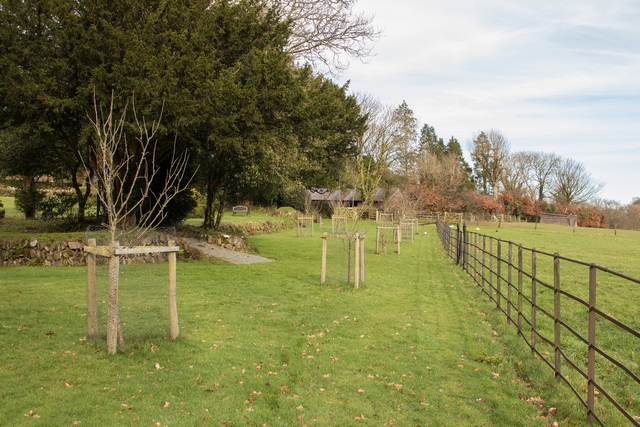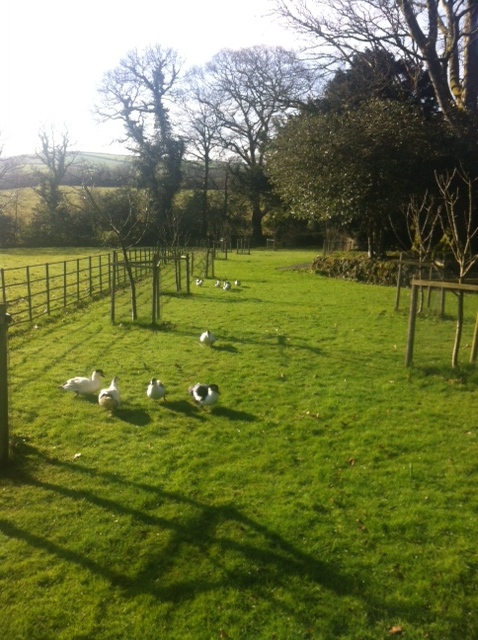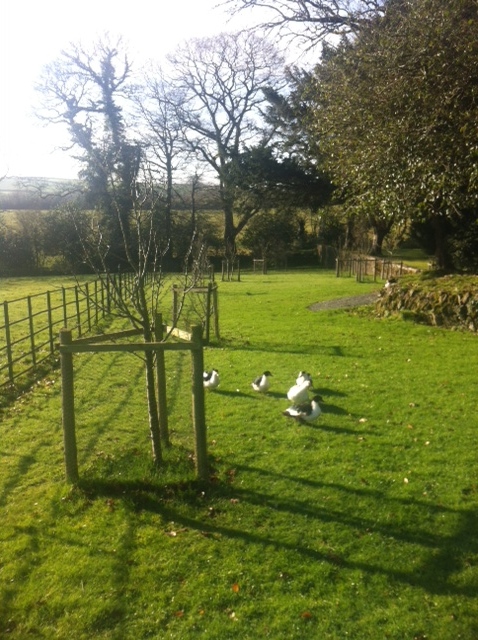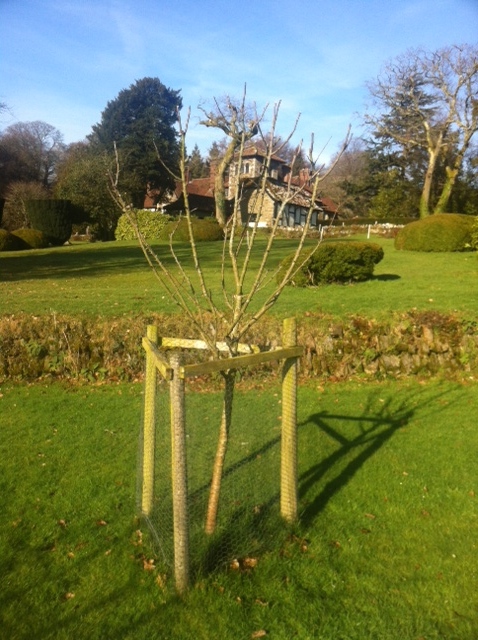I am delighted that as from this month Ben Probert from Pen and Trowel will be working with us at Coombe Trenchard on and advisory basis. Ben will be compiling an annual diary of the restoration work needed here in the gardens, and helping Graeme, our gardener plan this work.
Ben has always been fascinated by plants and gardens. With over 10 years providing advice and growing plants commercially, he now works as a gardener and consultant based near Launceston. His blog, 'Pots and Polytunnels', is a great read, and you can find out about the plants that he loves by searching online for 'Ben's Botanics'. If you would like Ben to be involved with your garden then visit www.penandtrowel.co.uk.
So over to you Ben.....
It would be very easy to think that gardens are completely asleep in winter. Without the colours of summer everything can look a little lifeless in its dormant state, but let me assure you that this is far from true!
For gardeners the winter is a useful time; it's said that January and February are the only times the gardener is ahead of the garden, and when spring and summer arrive it's easy to see how that would be true. The winter is a busy enough time at Coombe Trenchard, with plenty of pruning to be done.
Home to many heritage apple varieties, the orchard was planted to provide fresh apples for eating and cooking. Growing in one of the sunniest parts of the garden, the fruit trees have grown incredibly well, and have now reached the point where they need a little shaping as well as pruning. As they haven't been shaped before this has been a little scary in places; the first step is to remove unwanted branches, and on a few trees this certainly made alarmingly large piles of prunings! There is a lot of in-depth information around about apple pruning, so I'll just give an overview of the process here.
The aim of the pruning process is to have an apple tree with a nice open goblet-shaped crown, with an open centre. The first priority is to cut out any branches that face inward, any damaged shoots and any shoots that cross each other. Once any of these shoots (that might sometimes be thick branches!) have been removed, the aim then is to produce a 'balanced' tree, that is to say that you don't want all of the branches on one side of the tree! Prune out branches that are too close together, and try to produce a tree that is equal all the way round. Most apple varieties fruit on short side shoots called 'spurs'; to encourage these side shoots you must prune the long shoots made last year to around four buds up from the previous year's growth. This sounds quite complicated but is pretty much the same process that you would use to make Fuchsia or Pelargonium cuttings into bushy plants. The thing to remember is that, within reason, if you get it wrong you will affect the fruiting of the tree but you're unlikely to do long lasting damage.
As I say, there are plenty of resources out there on how to prune apples. One thing is almost certain though; once you start pruning your fruit trees someone will come and give you the benefit of their wisdom!
Some pruning jobs bring far greater headaches. In the yard at Coombe Trenchard there is an old fig. Sarah tells me that when they first moved to Coombe Trenchard the fig had fallen flat against the floor and was growing horizontally, and has since been patiently winched back into an upright position with rope. It's a beautiful tree and is laden with young fruits that will ripen next year, but being supported with rope is far from ideal, and has simply bought the fig some time. Something must be done.
When you look at a tree like this it's easy to get scared by it. Your mind races between thoughts of how to give it the best chance and what happens if it all goes wrong. Sometimes you have to bite the bullet and take action, but with older plants you must be patient; the more drastic the action the more likely it is to lead to the death of the tree.
The best way for this fig to thrive would be as a wall trained plant, but given that the trunk is pretty thick already we must rely on young shoots coming from ground level to make the structure of the future plant. In the meantime we need to reduce the weight of the plant so it doesn't strain too much on its rope. I'll admit I got a bit nervous suggesting removing a large chunk of the plant, but I'm confident that as well as lightening the load of the tree it will divert the energy of the plant into the new shoots that will make the wall trained plant.
The Wisteria against the wall of the house is already pretty well wall trained! My suspicion is that this plant is contemporary with the house (1906) or was planted soon afterwards. This plant is magnificent; stems climb the walls like intertwined snakes and the plant curves along the wall like a tree in traditional Japanese art. This plant is spectacular in spring, but as with the apples and the figs it needs to be pruned to keep it at its best. Winter Wisteria pruning is actually incredibly simple but again people get scared by what can sound complicated. All you need to know is that Wisterias flower on short side shoots (like apples do), and that your job as gardener is to encourage those shoots.
Removing clearly unwanted growth is the first job; anything heading off to somewhere it's not wanted should be removed. The next stage is to shorten side shoots to between three and four buds. Don't worry, plants can't count! You won't do any damage if you prune to five buds, or even don't prune to the exact same number each time- providing you leave two or more buds on each 'spur' you will be fine.
The quiet of winter is a great time to plan for the next year. The cutting garden is an important area at Coombe Trenchard, and is where flowers are grown for weddings that take place at the house, as well as for the house itself. The majority of flowers used for cutting are annuals, so every year the beds need to be prepared in anticipation of the coming season.
Coombe Trenchard has an impressive compost heap (which I am almost certainly going to write about more in due course!), and the compost from the heap is used widely in the garden as a mulch and soil improver. Whatever you grow, soil quality is crucial; if your soil gets tired and thin then your plants will struggle. Annuals really want to perform, so giving them good soil means better crops of better flowers!
I'm not a big fan of using chemicals in gardens. I'm not anti-chemicals on principle, but I do feel strongly that the best products for plants to use are the ones they are already adapted to take up. Good quality home made compost in the soil is full of nutrients and helps to keep a good soil structure. To feed the cutting beds and the borders at Coombe Trenchard with bonemeal or other 'manufactured' products would lead to lots of lush growth, but much of the growth would be unsustainable and would flop, soft growth would encourage pests and diseases and the soil wouldn't be able to keep its good structure.
It's funny how what goes around, comes around. When the first gardeners took up their posts at Coombe Trenchard in the early 20th century they were on the very edge of the 'chemical revolution' in gardening, and over the decades many of the old gardening wisdom will have been replaced by new chemical products such as fertilisers and sprays. Now, a century later, we are more enlightened about things like organic practices, and have now rediscovered what those early gardeners knew all along.
Ben.
Ben Probert has always been fascinated by plants and gardens. With over 10 years providing advice and growing plants commercially, he now works as a gardener and consultant based near Launceston. His blog, 'Pots and Polytunnels', is a great read, and you can find out about the plants that he loves by searching online for 'Ben's Botanics'. If you would like Ben to be involved with your garden then visit www.penandtrowel.co.uk.
